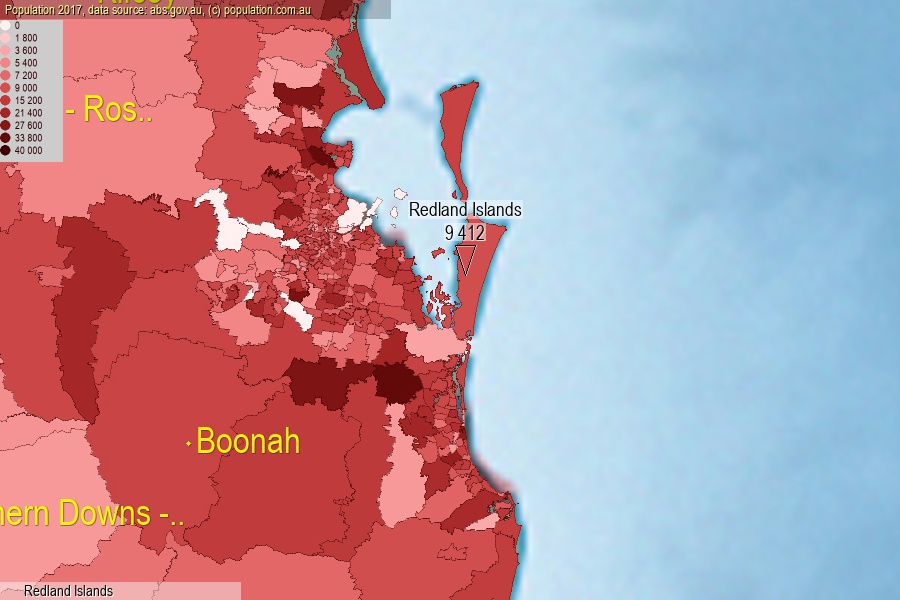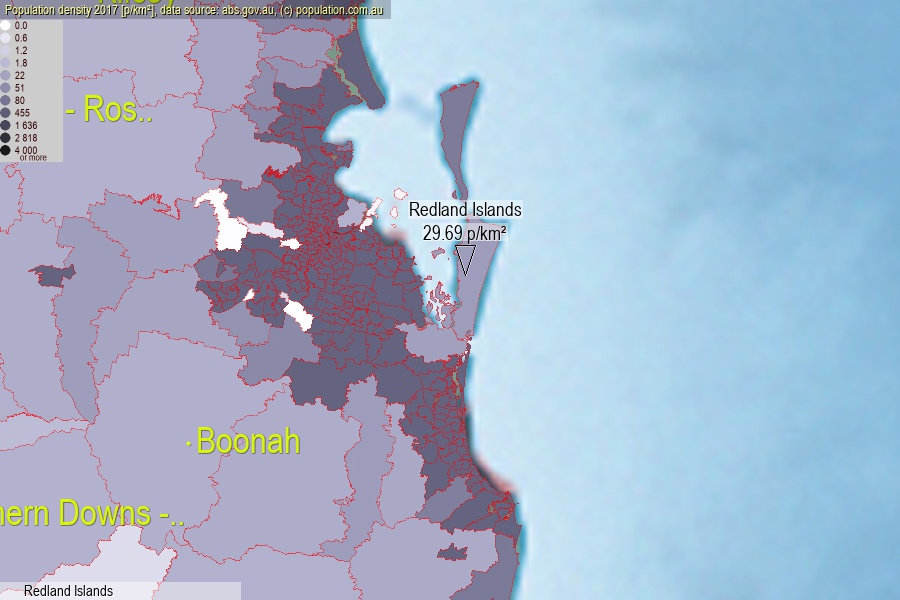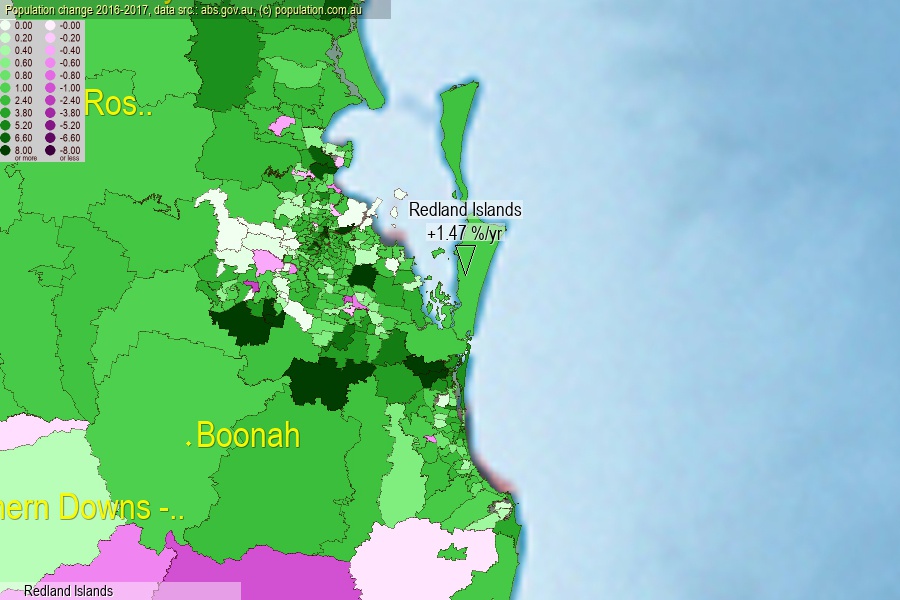 population.com.au
population.com.auLast official estimated population of Redland Islands (as Statistical Area Level 2) was 9 412 people (on 2017-06-30)[2]. This was 0.04% of total Australian population and 0.189% of QLD population. Area of Redland Islands is 317.00 km², in this year population density was 29.69 p/km² . If population growth rate would be same as in period 2016-2017 (+1.47%/yr), Redland Islands population in 2025 would be 10 574. [0]



Click to enlarge. Redland Islands is located in the center of the images.
Population [people], population density [p./km²] and population change [%/year] [2]
View borders » (new window) [4]
[2001-2002] +2.84 %/Yr.
[2002-2003] +4.37 %/Yr.
[2003-2004] +5.01 %/Yr.
[2004-2005] +1.87 %/Yr.
[2005-2006] +1.72 %/Yr.
[2006-2007] +4.19 %/Yr.
[2007-2008] +5.19 %/Yr.
[2008-2009] +5.29 %/Yr.
[2009-2010] +3.23 %/Yr.
[2010-2011] +3.10 %/Yr.
[2011-2012] +1.72 %/Yr.
[2012-2013] +1.34 %/Yr.
[2013-2014] +2.48 %/Yr.
[2014-2015] +1.35 %/Yr.
[2015-2016] +0.21 %/Yr.
[2016-2017] +1.47 %/Yr.
[0] Calculated with linear interpolation from officially estimated population
[1] Read more about SA2 and Australian Statistical Geography Standard (ASGS) on abs.gov.au
[2] Population data from Australian Bureau of Statistics (Population and density: 2017; change: 2016-2017)
[3] Digital Boundaries: Australian Statistical Geography Standard (ASGS) 2016.
[4] Border coordinates are simplifyed using Ramer-Douglas-Peucker algorithm.